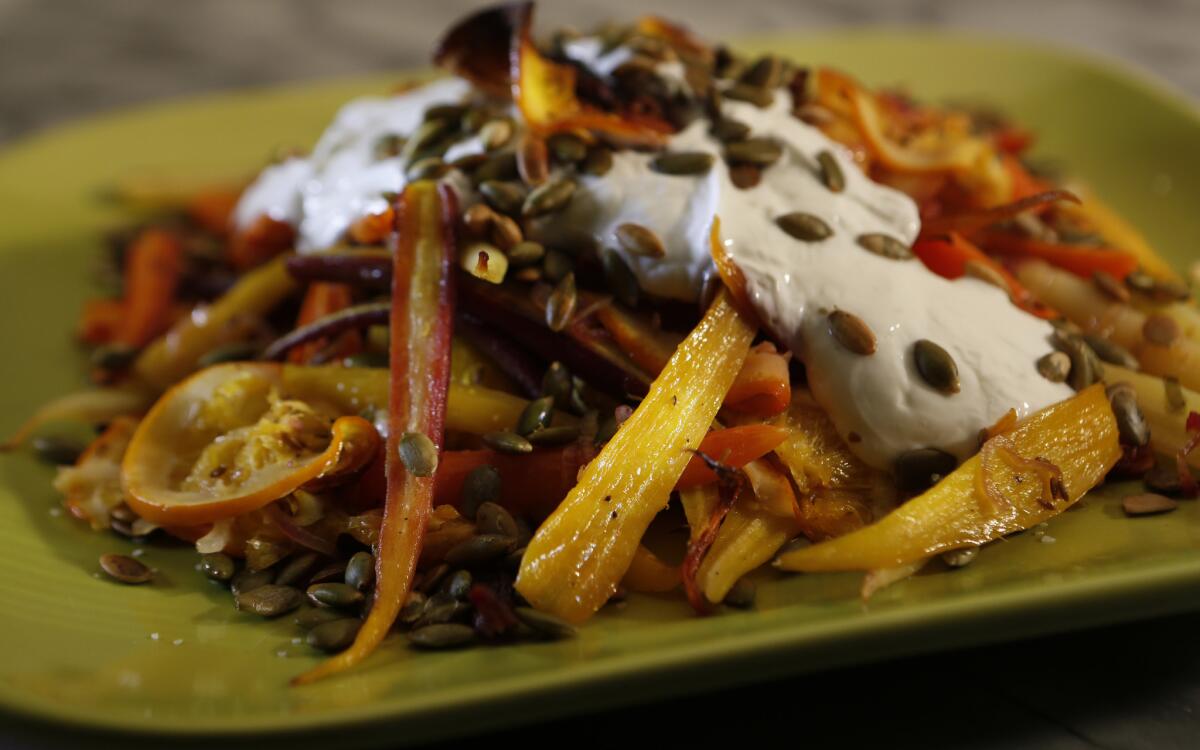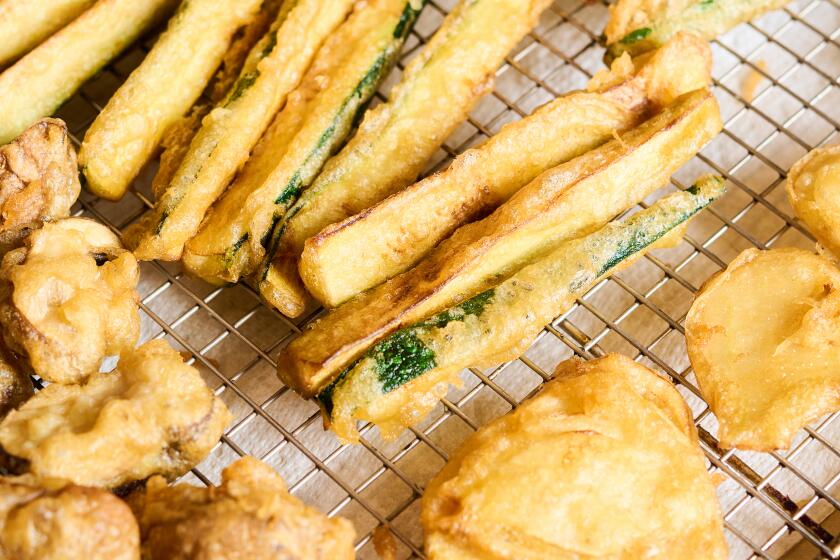Roasted carrots and oranges with cumin and pumpkin seeds

- Share via
It’s easy to be dazzled by all the spectacular citrus in the markets this time of year: blood and Cara Cara oranges, Meyer lemons, a dozen kinds of mandarins, finger limes smaller than your pinkie and Big Wong pummelos the size of your head.
But take a moment to appreciate one more truly great piece of fruit, one that virtually defined Southern California for more than a century but is often overlooked today: the navel orange.
A well-grown navel is exceptionally sweet, richly flavored and very juicy, especially when it comes from a great farm like Bernard Ranches in Riverside, or Polito Family Farm and Schaner Family Farms in northern San Diego County.
But its existence is perilous. “I’m staying with them, but just barely,” says Bob Polito. “I’m selling so many more mandarins than navels it’s unbelievable. A navel is a great piece of fruit, but if push comes to shove, if I have to take out something, it would probably be navels.”
Pop a wedge of one of these navel oranges in your mouth and you’ll understand why there was such a fuss about them when they were introduced in the 19th century.
Navel oranges were found in Brazil in the early 1800s, a “sport” or spontaneous mutation on an orange tree. First planted in Southern California in the 1870s, they quickly became the hallmark of California citrus, planted by the thousands of acres in Orange, Los Angeles and, particularly, Riverside counties.
One of the two original California navel orange trees is actually still standing at the corner of Magnolia and Arlington avenues in Riverside, protected by an iron fence with a bronze plaque that reads, “The most valuable fruit introduction yet made by the United States Department of Agriculture.” It’s like a monument to a hero of some forgotten war.
The navel is also a biological oddity. It’s naturally seedless; any new trees must be grown from cuttings of old trees. It’s also actually two oranges in one. There’s the main piece of fruit, but if you look closely you’ll see there is also a very tiny second orange that grows in from the blossom end. That creates the bellybutton that gives the navel it’s name.
For cooks, it also means that navels need to be treated a little differently than other oranges. While most citrus can be cut cleanly into segments (called “supremes”), that’s difficult if not impossible with navels. You’re a lot better off slicing them horizontally into wheels.
But that’s a minor inconvenience, given the flavor reward.
There are so many things you can do with an orange. Grind the zest to make a spiced salt (start with 1/4 cup of salt and 2 teaspoons of grated zest and vamp from there -- smoked paprika is really good). Or make a finishing sugar the same way: Allow about 1/2 cup of sugar for the zest of every orange. Sprinkle this on shortcakes, cookies or other pastries.
Make candied orange peel by blanching the whole peel (pith and all) in boiling water three times, then simmering it in a thick sugar syrup (about 2 cups of sugar to 1 cup of water) until it is saturated and soft.
Or try roasting your oranges. Roasting adds a caramel note to the sweetness of the fruit and softens the bitterness of the peel.
Of course, you could do any of these things with Meyers, mandarins or any of those other trendy citrus fruits. But when you’re cooking with navels, you’re cooking with history.
Heat oven to 400 degrees. Line a baking sheet with aluminum foil.
Spread the carrots, oranges and shallots on the baking sheet and sprinkle over cumin seed, salt and black pepper. Drizzle with olive oil and the orange juice, and toss to coat everything lightly and evenly.
Arrange the orange slices and carrots in as close to a single layer as you can. Roast until the oranges are fragrant and have begun to color, about 20 minutes.
Stir carrots and oranges with a spatula and continue roasting until carrots are tender and lightly browned, about 10 minutes more.
Arrange the vegetables on a platter, spoon over yogurt and sprinkle with pumpkin seeds. Serve warm or at room temperature.
Get our Cooking newsletter
Get a taste of Los Angeles — and the world — with recipes and kitchen tricks from the L.A. Times’ Cooking newsletter.
You may occasionally receive promotional content from the Los Angeles Times.
















